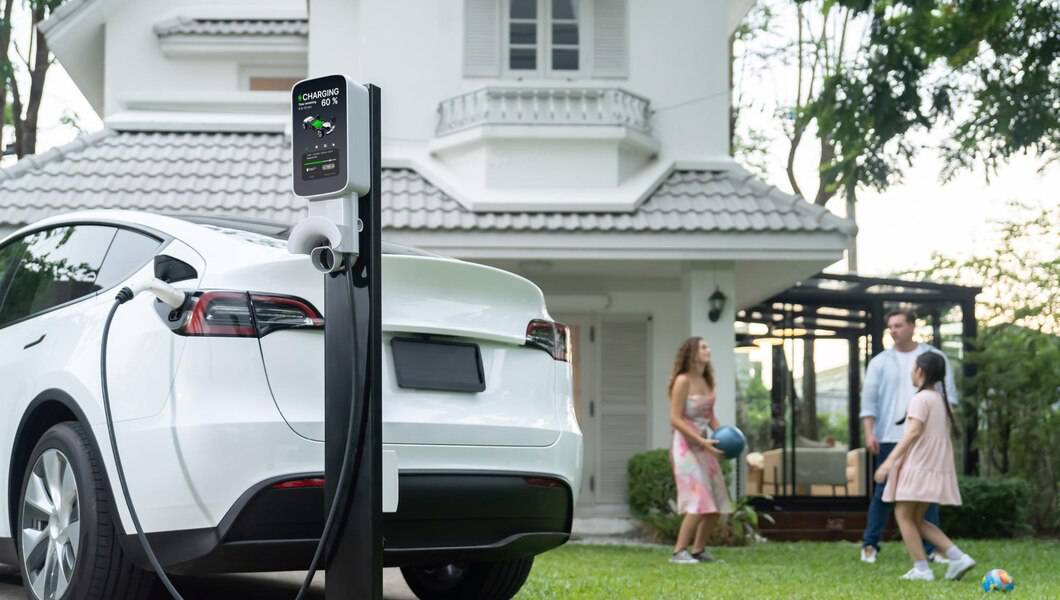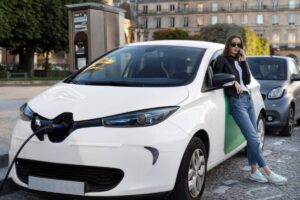The Automobiles & Vehicles Blog

How to Compare EV Range and Battery Efficiency
When shopping for an electric vehicle (EV), one of the most critical—and confusing—factors to evaluate is range. But it’s not just about how far you can go on a single charge—it’s about how efficiently the car uses energy and how that aligns with your lifestyle.
Our team found that drivers who understand EV range and battery efficiency make smarter purchase decisions, avoid range anxiety, and get better long-term value from their investment. This guide will help you compare electric car mileage in a meaningful way, so you can assess performance beyond the marketing headlines.
Pro Tip: Don’t just ask how far an EV can go—ask how efficiently it gets there.
Quick Guide: EV Range and Battery Efficiency at a Glance
- Understand how range is measured (WLTP, EPA, real-world conditions).
- Compare energy consumption in kWh per 100 km or miles per kWh.
- Consider your daily driving habits and climate.
- Review battery size (capacity) vs usable range.
- Factor in regen braking and driving modes.
- Look for efficiency ratings in real-world driver reviews.
- Balance range needs with charging access and cost.
Important: An EV with a longer range isn’t always better—efficiency, price, and practicality matter just as much.
Step 1: Know How EV Range Is Measured
EV manufacturers use various test cycles to estimate range. The two most common are:
WLTP (Worldwide Harmonised Light Vehicles Test Procedure)
- Used in Europe
- Tends to be optimistic
- Includes urban, suburban, and highway cycles
EPA (Environmental Protection Agency)
- Used in the U.S.
- Considered more realistic
- Reflects typical American driving conditions
Real-World Range often falls between WLTP and EPA estimates, depending on temperature, terrain, and driving style.
Step 2: Understand Battery Capacity vs Range
An EV’s range is primarily determined by its battery capacity—measured in kilowatt-hours (kWh)—but also by how efficiently it uses that energy.
Example:
- Car A: 60 kWh battery, 420 km range → uses 14.3 kWh/100 km
- Car B: 77 kWh battery, 480 km range → uses 16.0 kWh/100 km
Despite Car B having more range, Car A is more efficient.
Key Terms:
- Battery size (gross vs usable): Some manufacturers quote total capacity, but only part of it is accessible.
- Energy consumption (kWh/100 km): Lower = more efficient.
- Miles per kWh (U.S. format): Higher = more efficient.
Step 3: Evaluate Your Driving Needs and Conditions
The best range for you depends on how and where you drive.
Ask Yourself:
- How many kilometres do I drive daily?
- Do I frequently take long trips?
- What’s the climate where I live?
- Will I drive mostly in the city or on motorways?
Practical Range Guidelines:
- City drivers (<100 km/day): 250–300 km range is sufficient
- Mixed use (urban + occasional trips): Aim for 400–500 km
- Frequent road trips: Look for 500+ km and fast-charging support
Climate Tip: Cold weather can reduce range by 20–30%, especially without a heat pump.
Step 4: Compare Real-World Energy Efficiency
Manufacturer estimates are helpful, but real-world usage paints a clearer picture.
Key Efficiency Metrics:
- kWh/100 km (Europe/metric): Lower numbers are better
- mi/kWh (U.S.): Higher numbers are better
Average Efficiency Examples:
| Model | Battery Size | Range | Efficiency (kWh/100 km) |
| Tesla Model 3 LR | 75 kWh | 560 km | 13.4 kWh/100 km |
| Hyundai IONIQ 6 | 77.4 kWh | 610 km | 12.7 kWh/100 km |
| Volkswagen ID.4 | 77 kWh | 500 km | 15.4 kWh/100 km |
| Nissan Leaf e+ | 62 kWh | 385 km | 16.1 kWh/100 km |
Use driver-based review sites like EV-database.org, InsideEVs, or real-life test videos to confirm efficiency figures.
Step 5: Factor in Regenerative Braking and Driving Modes
EVs recapture energy when braking—known as regenerative braking—which improves efficiency, especially in stop-and-go driving.
Check For:
- Adjustable regen levels
- One-pedal driving capability
- Eco or efficiency driving modes
- Navigation-linked regen (available in some premium EVs)
Urban Benefit: Regenerative braking can extend range in city driving significantly, sometimes by up to 20%.
Step 6: Don’t Obsess Over Maximum Range Alone
A higher range often comes with trade-offs—more cost, heavier batteries, and longer charging times.
Consider:

- Charging infrastructure: If you have home charging, lower range is easier to live with
- Total vehicle weight: Heavier cars often consume more energy
- Battery cost and replacement: Larger packs = more expensive
- Efficiency per euro/mile: A slightly shorter range but more efficient EV might be more economical overall
Cost-Efficiency Tip: Focus on the range you’ll use daily, not theoretical limits you rarely reach.
Step 7: Use Range Comparison Tools and Resources
Several platforms help you compare EVs side by side based on real metrics.
Recommended Tools:
- EV-database.org – Comprehensive EU-based database
- InsideEVs range tests – Controlled real-world drives
- CarWow / Autocar / Edmunds – Comparison reviews
- A Better Routeplanner (ABRP) – Simulates real trips using actual EV specs and elevation data
These tools allow you to factor in climate, speed, route, and payload—giving a far clearer picture than manufacturer estimates alone.
EV Range vs Battery Size Summary Table
| EV Model | Battery Size (kWh) | Real-World Range (km) | Efficiency (kWh/100 km) |
| Tesla Model Y RWD | 60 | 430 | 13.9 |
| Polestar 2 LR | 78 | 540 | 14.4 |
| Hyundai Kona EV | 64 | 440 | 14.5 |
| BMW i4 eDrive40 | 80.7 | 520 | 15.5 |
| Renault Megane E-Tech | 60 | 385 | 15.6 |
Warning: Some EVs with larger batteries may advertise impressive range, but real-world driving can vary significantly. Always confirm using independent tests or user data.
Frequently Asked Questions

1. What’s the difference between WLTP and EPA range?
WLTP is the European standard, but tends to be more optimistic. EPA is the U.S. standard and more realistic, especially for highway driving.
2. Why does EV range drop in winter?
Cold temperatures reduce battery efficiency, and heating the cabin draws additional power. Pre-conditioning and heat pumps can reduce this impact.
3. How can I improve my EV’s efficiency?
Drive smoothly, use eco modes, minimise fast acceleration, and pre-condition the car while still plugged in. Use regenerative braking effectively.
4. Should I buy an EV with the biggest battery possible?
Only if you need it. Bigger batteries cost more and weigh more. If you drive short distances and can charge regularly, a smaller, more efficient battery is better.
5. How accurate are the manufacturer’s range claims?
They’re tested under specific conditions. Real-world usage—speed, terrain, temperature, and driving style—can lead to 10–30% deviation.
Compare Smart, Drive Confident
Choosing an electric car based on range isn’t about picking the highest number—it’s about finding the right match between efficiency, battery size, and your daily life.
Understanding energy consumption, driving patterns, and real-world conditions empowers you to select an EV that offers the right mix of performance, reliability, and practicality. With thoughtful research, you’ll enjoy not just the miles—but the drive.









